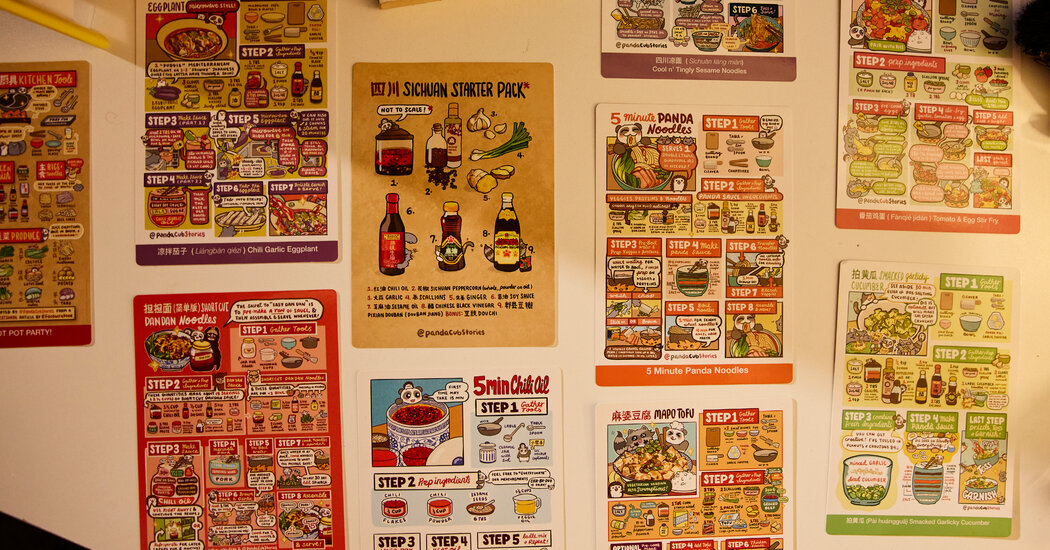Cooking Strategies for ADHD: Tips for Focused Meal Prep
ADHD Meal Prep: Tips for Focused Cooking
Cooking can sometimes feel like a daunting task, especially for individuals with ADHD (Attention-Deficit/Hyperactivity Disorder). The kitchen can be a chaotic space filled with distractions, and mealtime can often turn into a stressful experience. But hey, it doesn’t have to be that way! With a few simple strategies, you can create a more focused and enjoyable cooking experience. In this article, we’ll dive into some effective cooking strategies that can help individuals with ADHD tackle meal preparation with ease. So, roll up your sleeves, and let’s get started!
Understanding ADHD and Cooking Challenges
If you or someone you know has ADHD, you’ll likely recognize that staying focused in the kitchen can be akin to herding cats. Distractions pop up everywhere! The sizzling of the stovetop, a text notification, or even the tempting aroma of something baking can pull your attention away from the task at hand. Cooking often requires multitasking and organization, which can be particularly challenging for people with ADHD.
So why does cooking feel overwhelming? Well, ADHD can affect executive functions — those mental skills that help you plan, stay organized, manage time effectively, and remain focused. When these functions are impacted, the simple act of preparing a meal can morph into a frustrating, anxiety-ridden ordeal. But don’t worry; the good news is that with the right strategies in place, you can simplify the process and create enjoyable cooking experiences.
Effective Cooking Strategies for ADHD
Let’s explore some practical strategies that can help streamline cooking and make meal prep feel less like a Herculean task.
1. Simplify Your Recipe Choices
When you’re planning meals, simplicity is key. Instead of choosing elaborate recipes with a laundry list of ingredients, look for simpler options. Here are some ideas:
- One-Pot Meals: These are fantastic because they minimize cleanup. Think casseroles, stews, or stir-fries — all cooked in one vessel.
- Sheet Pan Dinners: Toss your protein and veggies on a pan, season them, and roast them in the oven. Voila! Minimal fuss and maximum flavor.
- Batch Cooking: Prepare large amounts of simple dishes under 30 minutes! This way, you can enjoy leftovers throughout the week.
2. Organize Your Ingredients
Have you ever found yourself searching frantically for that elusive spice or ingredient? It’s not the best mental state when you’re ready to cook. Organizing your kitchen can be a game-changer! Here’s how:
- Designate Zones: Create specific areas in your kitchen for prep, cooking, and cleaning. Keep everything you need within easy reach.
- Use Clear Containers: Store ingredients in transparent containers, so you can quickly see what’s available. You can even work with labels for quick identification.
- Pre-chop Ingredients: Spend a little time chopping vegetables or prepping proteins in advance. You can store them in easy-to-reach containers in the fridge.
3. Create a Meal Plan
Meal planning might sound tedious, but it can significantly reduce decision fatigue. Having a structured plan can help your brain feel less overwhelmed. Here’s a simple approach:
- Set Aside Time Weekly: Choose a day to plan your meals for the week. Sit down with your favorite recipes or a meal planning app.
- Make a Grocery List: Based on your meal plan, create a grocery list to minimize impulse buys. Stick to it when shopping!
- Keep it Flexible: Don’t hesitate to swap meals around if something comes up. Flexibility is key!
4. Use Timers and Alarms
If time management is a struggle, timers can be your best friend! They can act as reminders to stay on track. Here are some ways to use them effectively:
- Set Cooking Timers: Use a digital timer or smartphone alarm to remind you of cooking times. This way, you won’t lose track of what’s on the stove.
- Break Tasks into Segments: Divide your cooking into small, manageable segments. For instance, set a timer for 10 minutes to chop, followed by another 10-minute timer for cooking.
5. Minimize Distractions
In a world full of distractions, it’s essential to create a focused cooking environment. Here’s how to reduce the noise in your head (and around you):
- Silence Your Phone: Turn off notifications while you cook. Out of sight, out of mind!
- Play Music or White Noise: Some gentle background music or white noise can help drown out distractions while keeping you focused.
- Clear the Counter: A cluttered workspace can lead to a cluttered mind. Before cooking, declutter your countertops.
6. Incorporate Mindfulness
Mindfulness can significantly help improve focus. When you’re in the kitchen, try to immerse yourself fully in the cooking experience. Here are some mindful practices you can incorporate:
- Focus on the Process: Pay attention to what you’re doing. Notice the textures, colors, and smells of the ingredients.
- Breathe and Slow Down: Take deep breaths if you feel stressed. Slowing down can help you enjoy the process instead of rushing through it.
7. Get Creative with Cooking Tools
Sometimes, the tools you use can significantly impact your cooking experience. Consider investing in some handy gadgets that make cooking easier:
- Slow Cooker or Instant Pot:
- Food Processor:
- Measuring Tools with Visual Indicators:
These appliances take the stress out of meal prep. Just set it, and forget it!
Chopping, slicing, and dicing can be a breeze with a good processor.
These can help simplify cooking and ensure you’re using the right amounts.
8. Involve Others
Cooking can be a fun activity to share, and it can help ease the burden. Don’t hesitate to get the family involved! Here’s how it can work for you:
- Assign Tasks: Let others help with different aspects of cooking. One can chop veggies while another prepares the sauce.
- Encourage Kids to Join In: Cooking with children can turn meal prep into a fun bonding activity. Plus, they learn valuable skills while you work together.
9. Maintain a Positive Mindset
Lastly, keep a positive attitude about cooking! It’s easy to get frustrated during meal prep, especially when things don’t go as planned. Remember that it’s okay to mess up sometimes; cooking is about experimentation, so embrace the adventure!
- Celebrate Small Wins: Whether you chopped an onion without crying or cooked a dish successfully, celebrate those accomplishments!
- Learn from Mistakes: Rather than feeling defeated when something goes wrong, view it as an opportunity to learn.
Conclusion
Cooking doesn’t have to be overwhelming for individuals with ADHD. With a little bit of planning, organization, and mindfulness, you can turn meal prep into an enjoyable experience that fuels your body and nourishes your soul. By simplifying recipes, organizing ingredients, using timers, and minimizing distractions, you can make the kitchen a more inviting and productive space. So, gear up and embrace your inner chef—great meals are just a strategy away!
FAQs
-
What are some quick and healthy meal options for someone with ADHD?
- Consider one-pot meals like stir-fries, sheet pan dinners, or salads with protein. Smoothies can also be a nutritious and quick option!
-
How can I stay focused while cooking?
- Minimize distractions by silencing your phone, organizing your workspace, and using timers to keep you on track.
-
What cooking tools are best for individuals with ADHD?
- Tools like slow cookers, food processors, and visually marked measuring cups can make cooking easier and more efficient.
-
Can mindfulness techniques help with cooking?
- Absolutely! Practicing mindfulness can enhance focus by encouraging you to be present in the moment and appreciate the cooking process.
-
Is it okay to ask for help with meal prep?
- Yes! Involving family members or friends in meal prep can make cooking more enjoyable and less stressful.







